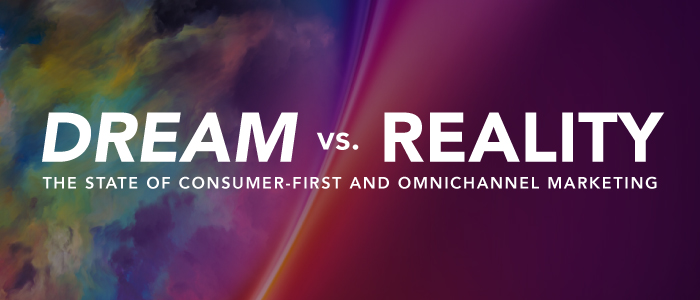As our MediaMath family members gather around dinner tables and living rooms with their natural or chosen relatives this holiday season, they will undoubtedly be asked how it’s going at work. They may yet again have to explain what it is we do in the world of digital advertising and how, yes, we help marketers connect with consumers all over the world across all kinds of digital screens but, no, we are not one of the bad guys who keeps track of your private thoughts or who your friends are or stalks you, Grandma—that’s another company.
To help inform those holiday conversations, we thought we would jot down some quick thoughts about how things are going here at MediaMath. In short, it’s been an amazing year—full of ups and downs and pretty much everything in between. This year, we raised a significant investment of capital to help us position our technology, talent and partnerships well to ride the sometimes choppy waters of digital marketing and to continue growing and competing at the highest levels in 2019.
We’ve made significant strides building towards our product vision across identity, AI and supply over the last 12 months. Those terms are somewhat “inside baseball.” But put simply, it means we are progressing in how we help marketers and their partners recognize consumers on their digital devices, reach them efficiently and appropriately, show them the most relevant messages and enable them to drive real business growth.
Our identity work centers on creating a global, open, enterprise-class, pseudonymous solution that puts the consumer first, backed by support for the IAB’s DigiTrust initiative and partnerships with some of the world’s most trusted and innovative technologies. We are continuing to refactor the supply chain for how an ad gets from concept to screen, with several key initiatives under our Curated Markets product line to foster accountability in media procurement and drive performance across premium supply, including our Guaranteed Viewable Market launch, updates to our native product and a commitment to stop working with SSPs with shady auction practices. We have rolled out further innovations across linear and connected TV, digital out of home and audio to extend the power of programmatic to new and emerging channels. On the AI front, we are optimizing our advanced machine learning algorithm, The Brain, now connected to IBM Marketing’s Watson AI tech to bring more quantitative horsepower into the marketing field, as well as showcasing our platform’s eagerness and readiness to allow other technologies to enrich it and enable clients’ capabilities that have been built on top of it. By partnering with the other platforms in which marketers invest, we can together help our clients reach their customers more effectively in ways those audiences—namely, us as consumers of content and buyers of goods and services both as customers and as clients—appreciate. Look for updates here in the first half of 2019.
It sounds both technical and lofty, and it is, but it is also super exciting and will have real-world applications that will help make marketing that everyone loves.
On the talent front, we elevated some of our best internal rock stars into new leadership slots this year. Take Wil Schobeiri, who is now running a growing and joint tech and product team under one banner. This is a key point of investment and attention because, at our roots, we are a tech company producing tech products. There have been other promotions too, such as Jenna Griffith, now our Chief Operating Officer, Anna Grodecka-Grad, our Chief Services Officer, and Franklin Rios, our Chief Commercial Officer overseeing both our corporate development and client operations teams globally.
We also hired new talent like Jim Sink, our SVP of Global Partnerships tasked with forging stronger relationships with our agency, channel and consultancy partners; Danny Sepulveda, our VP of Government Relations who is helping to shape and communicate MediaMath’s policies and practices concerning privacy and consumer protection; and Jackie Vanover, our VP, DSP, who is driving our platform innovation to help our clients find their audiences at the right time, for the right price, in the right place, with the right message, to delight and drive their business forward. We’re aggressively looking to hire more great talent as we continue to fill and create new roles in our growing endeavor. (Just in case cousin Eileen is interested, send her this link. We hear she rocks.) And to help evangelize and build upon our tech to meet the needs of both brands and agencies, we both revamped our Professional Services team to further optimize clients’ use of our platform with more robust campaign management, education and consulting offerings and developed new and strengthened existing partnerships with major players like IBM, Oracle and Akamai across our product pillars.
What all that upgrading and evolving results in is our continued position as a top choice for clients seeking an independent, transparent, software-based multi-channel platform with a robust product vision and roadmap. Translating for non-ad tech insider Uncle Jim, that means that while many marketers at the world’s biggest brands and agencies are going through big media companies like Facebook and Google to send advertising to people, we have become the preferred choice for those marketers who want to work with a purpose-built technology company like ours that is focused on their needs and that connects marketers and people—and everyone in between—in a way that is open and enterprise-class. That’s why we got highest-in-class grades (the parents should like that) from industry watchers like Gartner and Advertiser Perceptions.
At the same time, we’re also finding ways to make marketing an actual force for good. We are part of the Pledge 1% movement, meaning we’re donating 1% of our time, 1% of our technology and 1% of our profits to support causes that we all care about. (To find out more about the ways in which we’re making this a reality, see our holiday card here). And because we know that those dinner table conversations inevitably turn to concern over how people’s information is being used, stored and distributed, we are working with our trade associations to more clearly understand as an industry how we can evolve to better present our value proposition to consumers and give them greater control over how they are observed in the market. These efforts range from helping construct the IAB’s Transparency and Consent Framework for the GDPR to working with the FBI to take down a global botnet.
We are riding the crest of a wave of technology that is changing the world of advertising and how people relate to the brands they love. It’s great.
So, after all that, from our family to yours, we hope everyone has a great holiday and prosperous new year. Now, back to dinner.




 “From ‘omnichannel’ to ‘big data’ to ‘artificial intelligence,’ the buzzwords of corporate strategists, CEOs and marketing executives are once again making their cyclical ~5-year shift. As ‘AI’ and its ingredients—machine learning, deep learning, facial recognition, natural language processing— become the words de rigueur of the next few years, we are going to continue to see Moore’s Law-like impacts of technological change.
“From ‘omnichannel’ to ‘big data’ to ‘artificial intelligence,’ the buzzwords of corporate strategists, CEOs and marketing executives are once again making their cyclical ~5-year shift. As ‘AI’ and its ingredients—machine learning, deep learning, facial recognition, natural language processing— become the words de rigueur of the next few years, we are going to continue to see Moore’s Law-like impacts of technological change. “There will be a surge in the use of deep learning techniques by ad-tech companies in all aspects of marketing: customer ad response prediction, audience lookalike modeling, dynamic creative optimization, probabilistic identity tracking, fraud detection and optimal bidding. Deep learning models have been shown to be vulnerable to imperceptible perturbations in data that dupe models into making wrong predictions or classifications. With the growing reliance on large datasets, AI systems will need to guard against such attacks on data, and the savviest advertisers will increasingly look into adversarial ML techniques to train models to be robust against such attacks.” — Prasad Chalasani, Chief Scientist
“There will be a surge in the use of deep learning techniques by ad-tech companies in all aspects of marketing: customer ad response prediction, audience lookalike modeling, dynamic creative optimization, probabilistic identity tracking, fraud detection and optimal bidding. Deep learning models have been shown to be vulnerable to imperceptible perturbations in data that dupe models into making wrong predictions or classifications. With the growing reliance on large datasets, AI systems will need to guard against such attacks on data, and the savviest advertisers will increasingly look into adversarial ML techniques to train models to be robust against such attacks.” — Prasad Chalasani, Chief Scientist Whereas two to three years ago TV buyers were saying ‘talk to my digital buyers about connected TV,’ now both sides are saying we should be the ones to control this industry. There was about $10 billion dollars spent last year that’s forecasted to grow, and the industry hasn’t even reached full potential. We need to stop saying that this is the year of connected TV because we are already there. But we’re at a point where buyers are saying I want to be buying into connected TV and buying into addressable TV not as a value-add to their linear buy but as a distinct channel.” — Mike Fisher, VP/Head of Advanced TV & Video
Whereas two to three years ago TV buyers were saying ‘talk to my digital buyers about connected TV,’ now both sides are saying we should be the ones to control this industry. There was about $10 billion dollars spent last year that’s forecasted to grow, and the industry hasn’t even reached full potential. We need to stop saying that this is the year of connected TV because we are already there. But we’re at a point where buyers are saying I want to be buying into connected TV and buying into addressable TV not as a value-add to their linear buy but as a distinct channel.” — Mike Fisher, VP/Head of Advanced TV & Video “Mobile is not a channel anymore, but the channel of the other channels. Mobile is becoming the centerpiece of overall advertising spend, building the bridge between online and offline through location data ( DOOH, TV, audio, desktop, mobile). We expect a big consolidation of location data providers—they’ll partner with DSPs, TV and DOOH solutions to win market share. We also expect location data improvement of quality vs. quantity as the stakes for accuracy become high with attribution and we dig into the correlation between visits and sales. From a vertical perspective, location attribution will become especially interesting for CPGs, which don’t always have access to sales data, and for retailers as an additional down-funnel KPI for them to drive users to in-store purchase.” — Floriana Nicastro, Director, Mobile Product Solution
“Mobile is not a channel anymore, but the channel of the other channels. Mobile is becoming the centerpiece of overall advertising spend, building the bridge between online and offline through location data ( DOOH, TV, audio, desktop, mobile). We expect a big consolidation of location data providers—they’ll partner with DSPs, TV and DOOH solutions to win market share. We also expect location data improvement of quality vs. quantity as the stakes for accuracy become high with attribution and we dig into the correlation between visits and sales. From a vertical perspective, location attribution will become especially interesting for CPGs, which don’t always have access to sales data, and for retailers as an additional down-funnel KPI for them to drive users to in-store purchase.” — Floriana Nicastro, Director, Mobile Product Solution “We’ll see continued/increased scrutiny of major first-party data players’ privacy, security, anti-fraud, brand safety and election-related practices, with expansion of that scrutiny to third-party companies, and improved industry standards to proactively address these concerns, along with emerging technologies such as connected TV and IoT.” — Alice Lincoln, Vice President of Data Policy & Governance
“We’ll see continued/increased scrutiny of major first-party data players’ privacy, security, anti-fraud, brand safety and election-related practices, with expansion of that scrutiny to third-party companies, and improved industry standards to proactively address these concerns, along with emerging technologies such as connected TV and IoT.” — Alice Lincoln, Vice President of Data Policy & Governance “I expect certain browsers to continue to restrict third-party tracking and advertising by default. This tips the scales further in the direction of walled gardens and further fragments advertisers’ views of their customers. This also threatens the marketing dollars that fund free and open Internet content offered by independent publishers. Up to 80% of consumer browsing could be in privacy-enabled browsers by EOY 2019.
“I expect certain browsers to continue to restrict third-party tracking and advertising by default. This tips the scales further in the direction of walled gardens and further fragments advertisers’ views of their customers. This also threatens the marketing dollars that fund free and open Internet content offered by independent publishers. Up to 80% of consumer browsing could be in privacy-enabled browsers by EOY 2019. “Consent management companies, customer data platforms and data management platforms will continue to become critical components for managing the interaction of consumer preferences, personal information and pseudo-anonymous online identities. With DoubleClick’s decision this year to stop populating the encrypted UserID field in DCM and DBM for consumers globally, marketers wanting to maximize campaign effectiveness and achieve maximum relevance for consumers must now explore alternative solutions in earnest.” — Ellie Windle, VP, Global Business Development
“Consent management companies, customer data platforms and data management platforms will continue to become critical components for managing the interaction of consumer preferences, personal information and pseudo-anonymous online identities. With DoubleClick’s decision this year to stop populating the encrypted UserID field in DCM and DBM for consumers globally, marketers wanting to maximize campaign effectiveness and achieve maximum relevance for consumers must now explore alternative solutions in earnest.” — Ellie Windle, VP, Global Business Development





